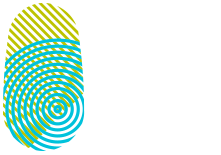Wolfgang Steinbauer, Head of Crypto & Security, NXP Semiconductors, explains how quantum computing has the potential to play a significant role in advancing our scientific knowledge and society in the coming decades, yet challenges the mechanisms we use today to secure information. This is why Charter of Trust Partners NXP, Infineon, and IBM are working on product solutions for a post-quantum future with long-term security.
By Wolfgang Steinbauer, Head of Crypto & Security, NXP Semiconductors
Security Threats Posed by Quantum Computing
Quantum computing will open up new fields of research and has the potential to play a significant role in advancing our scientific knowledge and society in the coming decades. However, its ability to instantly perform massive calculations also challenges the mechanisms we use today to secure information. Today, public-key and symmetrical key cryptography form the basics of encrypting and decrypting data and creating digital signatures. Very soon, at the rate that quantum computing is advancing, these security techniques are likely to be compromised.
Organisations involved in providing cryptographic services and semiconductor vendors, such as NXP and their Charter of Trust Partners Infineon and IBM, are keenly aware of the impact that quantum computing will have on the classic security techniques employed today. The industry is united to research and develop new cryptographic methods that are resistant to the capabilities that quantum computing provides. Termed post-quantum cryptography (PQC), it encompasses the study of new cryptographic algorithms and standards together with a migration path from existing cryptographic methods. Most importantly, PQC methods do not require a quantum computer to operate and utilise existing hardware platforms.
Quantum Supremacy Benchmarks
As in many fields of scientific research, the desire to stake claim to significant technology leaps has also shaped quantum computing innovations. Quantum supremacy is the term used to describe solving a complex equation with an early-stage quantum computer not possible using a conventional supercomputer. Quantum bits represent the basic element of information used in a quantum computer. One measure of the advancement in quantum computing is the computational power, measured in qubits. By the end of 2021, 100 qubit computers are already available for commercial research. However, industry opinion is that a 10,000 qubit system is required to compromise the widely used RSA-3072 public-key cryptographic algorithm. Nonetheless, the threat that quantum computing poses to established security algorithms in the coming decades is driving several critical PQC initiatives.
Post-Quantum Cryptography Essential to Futureproof Information Security
It might appear easy to overlook the extent to which we currently rely on public-key infrastructures such as RSA and ECC in our daily lives. Examples include using our smartphone for personal banking or investment transactions, the secure exchange of confidential medical records, and intelligent factory control systems. Other examples of potentially disruptive threats include circumvention of firmware upgrades in vehicles which might allow dangerous modifications to be installed to scenarios where one can retrospectively modify or forge digital signatures.
When it comes to developing a public-key infrastructure (PKI), the length of the key is an important metric. Long keys provide enhanced security but at the expense of the computational power required to compute with them. Although using long keys might not pose a challenge for a desktop computer, it does for a battery powered IIoT sensor. Consequentially, a key has a recommended length for a specific level of security. The USA’s National Institute of Standards and Technology (NIST) recommends PKI key length and the period of crypto protection. NIST and the German Federal Office for Information Security (BSI) play vital roles in fostering the innovation of new cryptographic standards for PQC. In 2016, NIST launched a competition inviting candidate algorithms suitable for PQC
The NIST PQC Competition
NXP as well as their Charter of Trust Partners IBM and Infineon are actively involved in the field of post-quantum cryptography and the standardization process. As part of this effort, NXP’s cryptographic experts have engaged with the NIST PQC standards process at an early stage. In 2020, NIST announced the finalist entrants in its PQC Competition, with two of the four key-exchange finalists co-authored by NXP security specialists.
With a long history of manufacturing semiconductor solutions used in security-based markets such as e-government, banking, and automotive, NXP is preparing to implement the new PQC standards once established. Already supplying semiconductor solutions based on current cryptographic PKI methods, NXP plans to offer customers a migration path for their products to the new standards. In addition to implementing the functional security techniques of PQC standards, NXP further believes more attention to logical and physical attack vectors are warranted.
During the NIST PQC process, the selection criteria included emphasis was the mathematical security and algorithm design. NXP security experts have delved deeper into the practical implementation aspects for each finalist candidate algorithm, with a particular focus on physical side-channel and fault attack vectors. A fault attack involves an adversary physically tampering with a device’s operation in an attempt to extract the secret key used. A side-channel attack covers a broad range of techniques based on analysis of how the device operates, including using information related to power consumption or electromagnetic radiation. NXP security consultants recently published a paper on their research and investigations of hardening the Kyber PQC algorithm; readers can access it here.
As the NIST PQC standard becomes ratified, work is already underway on their provisioning process. The first standardized post-quantum schemes are stateful hash-based signatures and involves a methodology process significantly different to those in use today. A transitional algorithm between current-day techniques and a quantum-resistance approach, the Commercial National Security Algorithm Suite (CNSA), uses traditional methods and larger key sizes. Many of NXP’s products already support CNSA.
Committed to a Post-Quantum Cryptographic Future
Quantum computing is emerging from innovation labs and being considered as a computing technology for some scientific research projects. However, it will be some time before the prospect of widespread deployment becomes a reality. Its contribution to society moving forward is hard to measure, but computer experts already predict it will be significant. That said, security specialists and information architects cannot underestimate the future threat it poses on our current widely used and standardized public-key infrastructure. Therefore, system designers will face many challenges transitioning their products to accommodate the new PQC standards.
Charter of Trust Partners have already made a significant contribution to the NIST PQC standards initiative and collaborated where such cooperation is permitted by compliance laws. NXP and Infineon co-submitted the NewHope scheme to the NIST standardization process (which made it to the second round) while NXP together with IBM co-submitted the Kyber algorithm for Quantum Safe Cryptography key-exchange, which is one of the finalist schemes.
It is now important that the industry works on products for a post-quantum future so customers can achieve long-term security in their products. Moving forward with the new standards will help ensure that the practical requirements of embedded security on resource-constrained devices, such as secure physical implementations, are fulfilled.
Image credit: rawpixel.com


You may also like

Richards Skalt takes over the Advocacy Workstream
With a strong background in advocacy and a forward-looking vision, Richard brings renewed energy to our mission of shaping a secure digital future. As he puts it:
“My motivation is to preserve and build upon the strong foundation of advocacy activities we’ve developed over the past years. At the same time, I’m committed to ensuring we’re in a position to shape the policies that will define how our business model and operations evolve in the future – including the cybersecurity of products and systems, the use, deployment, and distribution of robust AI solutions, as well as cloud security and secure datacenters.”
In a world defined by accelerating digital transformation and increasingly complex regulatory challenges, principled leadership and effective collaboration are more vital than ever. Under Richard’s leadership, the Advocacy Workstream will continue to engage policymakers, raise public awareness, and strengthen education around key issues such as cybersecurity, AI governance, and secure digital infrastructures.

New Chairwoman for the Global External Engagement Group
Pino’s election follows a dynamic Collaboration Week in Denmark, where Charter of Trust partners from around the world came together to align on strategy, strengthen partnerships, and reaffirm our commitment to a secure digital future. As a longstanding leader within the advocacy workstream, Pino has been instrumental in fostering open dialogue with key external stakeholders and promoting cybersecurity awareness across industries and institutions.
“A reliable digital world can only thrive if public and private institutions build trust and cyber-resilience together, share their expertise, and support society in this digital journey. Those are our goals at the Charter of Trust,” says Pino.
She takes over the role from Sumit Chanda, COO/CISO at Atos, who has guided the working group with vision and energy. We are pleased to share that Dr Chanda has since been elected Co-Chair of the Charter of Trust by the Board of Directors in February—ensuring his continued impact on the initiative’s strategic direction.
We extend our sincere thanks to Sumit for his outstanding leadership and warmly congratulate Pino on her new role.

Charter of Trust elects new co-chairs of the Board of Directors
The Partners and Associated Partners thanked Natalia Oropeza, Global Chief Cybersecurity Officer at Siemens, for her engagement and steady leadership during her term as Chairwoman. In her tenure, the Charter of Trust underwent important internal and external changes. What first stands out is the smooth integration of the four working groups, which made the Charter of Trust more agile, leaner and more efficient. It is also safe to say that the alliance has never had such a high level of exposure externally, due to the Charter of Trust partners continuous dedication to the mission of the alliance.
In the spirit of industry collaboration, Natalia Oropeza expressed her support to our new Co-Chairs and said how “incredibly proud of what we have achieved together, welcoming new partners, strengthening our structure, and elevating the Charter of Trust's impact on the global cybersecurity landscape. Collaboration has been at the heart of our success, and I am confident that Dr. Sumit Chanda and Dr. Ralf Schneider as Co-Chairs, the Charter will continue to drive meaningful progress towards a more secure digital world."
For the first time in its history, the Charter of Trust will be co-chaired. Dr. Ralf Schneider from Allianz and Dr. Sumit Chanda from Atos who have decades of experience in the world of cybersecurity and have been active within the alliance for several years now. Both unite an intrinsic motivation to foster inter- and intra-sector collaboration as well as the continuous sharing of knowledge between the Partners and Associated Partners of the Charter of Trust.
For the next year the co-chairs aim to amplify the number of Partners and Associated Partners. This growth, however, should still preserve the unique features of the Charter of Trust as a large practitioner organization with member from all over the world. Expanding into new sectors and new countries is a key target for the new leadership team, so that the Alliance can continue to engage with stakeholders at the highest level.
Dr. Sumit Chanda underlined that “The Charter of Trust’s role is to promote a safe and trusted digital work. Its unique partnership blend of large organisations, working across 190 countries, and across several sectors, has enabled it to make significant progress under the leadership of Mrs. Natalia Oropeza. I would like to thank her for these great achievements. Along with Dr. Ralf Schneider from Allianz, we welcome the opportunity to build on her work as the Co-Chairs of Charter of Trust.”
Ralf Schneider added that “In dynamic times with more risks, more uncertainty, and more unknowns, we as the Charter of Trust step up – to provide stability, promote reliability, and foster trust. This is our mission today and tomorrow.”.



